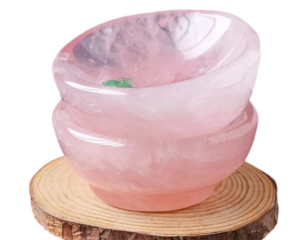R.I. is the comparative ability of a gem to bend, or refract light. It is expressed as the ratio of the velocity of light in air to its velocity in the substance e.g. diamond has an R.I. of 2.42. This means that light travels in air at a velocity 2.42 times its velocity in the diamond. Since R.I. is a measure of the optical density, the higher the R.I., the greater the degree of bending for the same angle of incidence.
- The optical density and therefore the strength of refraction vary from species to species.
- For a given species, the velocity at which light passes through is constant.
- The angle of refraction for any given angle of incidence is constant for every gem species, since the reduction in velocity determines the degree of refraction or bending of light, as it enters the gem.
- Refractive index can be measured by an instrument known as the refractometer, as well as by other simple methods to be discussed later.
Total Internal Reflection and Critical Angle
- To determine the behavior of light leaving a gemstone rather than entering it, it is only necessary to reverse the direction.
- Since light is reversible, a ray can therefore pass from a denser to a rarer medium.
- In this case, the refracted ray bends away from the normal and angle of refraction is greater than the angle of incidence
- Since there is a definite relationship between the angle of Incidence and angle of Refraction, with an increase in the angle of incidence the angle of refraction also increases.
- When the angle of refraction is 90°, the refracted ray moves parallel to the interface of the two media.
- The angle of incidence which corresponds to this angle of refraction is called the critical angle.
- Rays with greater angles of incidence do not pass into the rarer medium, but are totally reflected back into the denser medium. This is called total internal reflection of light.
- The critical angle of a gemstone is dependent on both the R.I. of the stone and that of the surrounding medium.
- Thus by taking the reciprocal of the R.I. of a substance and calculating the sine with the help of tables, we can find the critical angle for that substance.
- For example, glass (denser) and air (rarer) medium. For glass (R.I. 1.52) this angle is 41°28′ but for diamond (R.I. 2.42) this angle is 24°24′.
The measurement of the critical angle helps in:
- accurate determination of Refractive Index
- cutting of gemstones, especially in the cutting of colourless stones like diamond so as to obtain maximum amount of light reflection back to the observer, as a result of total internal reflection at the back facets.



























Leave a Reply
You must be logged in to post a comment.